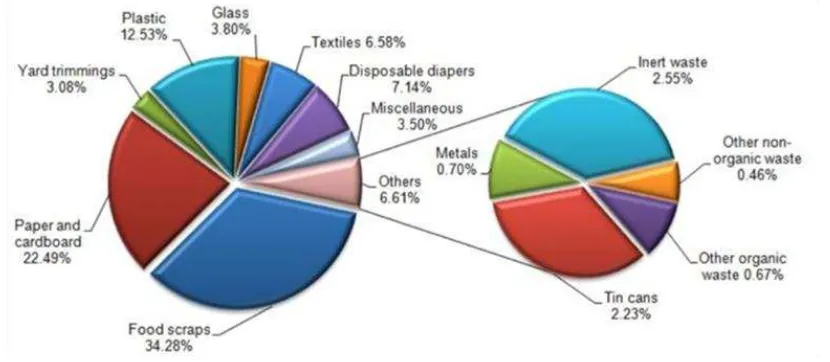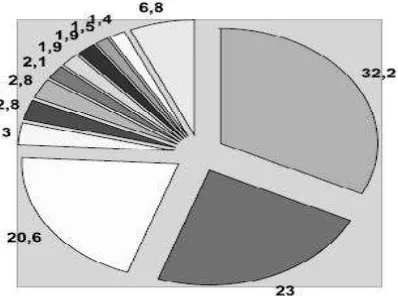UNIVERSITI TEKNIKAL MALAYSIA MELAKA
THE EFFECT OF CARBON CONTENT (WT %) TO THE
MECHANICAL AND THERMAL PROPERTIES OF
RECYCLE GLASS CERAMIC
This report submitted in accordance with requirement of the Universiti Teknikal Malaysia Melaka (UTeM) for the Bachelor Degree of Manufacturing Engineering
(Engineering Materials) (Hons.)
by
MOHD IKHWAN BIN ISHAK
B051110251
900206-02-6139
THE EFFECT OF CARBON CONTENT (WT %) TO THE
MECHANICAL AND THERMAL PROPERTIES OF
RECYCLE GLASS CERAMIC
MOHD IKHWAN BIN ISHAK
B051110251
UNIVERSITI TEKNIKAL MALAYSIA MELAKA
UNIVERSITI TEKNIKAL MALAYSIA MELAKA
BORANG PENGESAHAN STATUS LAPORAN PROJEK SARJANA MUDA
TAJUK: The Effect of Carbon Content (wt %) to the Mechanical and Thermal Properties of Recycle Glass Ceramic
SESI PENGAJIAN: 2013/14 Semester2
Saya MOHD IKHWAN BIN ISHAK
Mengaku membenarkan Laporan PSM ini disimpan di Perpustakaan Universiti Teknikal Malaysia Melaka (UTeM) dengan syarat-syarat kegunaan seperti berikut: 1. Laporan PSM adalah hak milik Universiti Teknikal Malaysia Melaka dan penulis. 2. Perpustakaan Universiti Teknikal Malaysia Melaka dibenarkan membuat salinan
untuk tujuan pengajian sahaja dengan izin penulis.
3. Perpustakaan dibenarkan membuat salinan laporan PSM ini sebagai bahan pertukaran antara institusi pengajian tinggi. atau kepentingan Malaysia sebagai mana yang
termaktub dalam AKTA RAHSIA RASMI 1972)
(Mengandungi maklumat TERHAD yang telah ditentukan oleh organisasi/badan di mana penyelidikan dijalankan)
AlamatTetap:
DECLARATION
I hereby, declared this report entitled “The Effect of Carbon Content (wt %) to the Mechanical and Thermal Properties of Recycle Glass Ceramic” is the results of my
own research except as cited in references.
Signature : ……….
Author’s Name : MOHD IKHWAN BIN ISHAK
APPROVAL
This report is submitted to the Faculty of Manufacturing Engineering of UTeM as a partial fulfillment of the requirements for the degree of Bachelor of Manufacturing Engineering (Engineering Materials) (Hons.). The member of the supervisory is as follow:
i
ABSTRAK
ii
ABSTRACT
iii
DEDICATION
iv
ACKNOWLEDGEMENT
v
2.1.3 Impacts towards society 7
2.2 Recycling glass 8
2.2.1 Soda lime silicate (SLS) glass 9
2.2.2 Composition and properties of SLS glass 10
2.3 Carbon 12
2.3.1 Carbon from wood charcoal 13
2.3.2 Composition of carbon in wood charcoal 14
2.4 Ball clay 15
2.5 Glass ceramic 15
2.5.1 Processing of glass ceramic 16
vi
CHAPTER 3: METHODOLOGY 29
3.1 Materials 29
3.1.1 Soda lime silicate (SLS) glass 29
3.1.2 Charcoal 30
3.3.1 X-ray Fluorescent Test (XRF) 36
3.3.2 Physical testing- Porosity, water absorption and bulk density 37
3.3.3 Mechanical testing-Hardness 38
3.3.4 Thermal testing 39
3.3.5 Statistical analysis 40
3.3.6 X-ray Diffraction Test 40
3.3.7 Scanning Electron Microscopy 41
CHAPTER 4: RESULTS AND DISCUSSION 42
4.1 Result- Material characterization 42
vii
4.7.2 Effect of carbon loading on physical, mechanical and thermal
properties of glass ceramic 61
4.7.3 Phase analysis 63
4.7.4 Surface morphology 64
CHAPTER 5: CONCLUSION 66
5.1 Conclusion 66
5.2 Future works 67
5.3 Project potential 67
REFERENCES 68
viii
LIST OF TABLES
2.1: Emission of greenhouse gases in the EU-15 and solid waste 8 management contribution in 1994
2.2: Quantity of waste glass recovered and disposed of in 2006 9 2.3: Chemical composition of soda lime silcate (SLS) waste 10
glass and bottomslag (BS)
2.4: Properties of Soda Lime Silicate Glass 12 2.5: Comparison of properties of graphite and diamond 13 2.6: Several manufacture of woods charcoal with the 14
carbonization involved
2.7: Percentage of carbon from thermally treated wood 14 2.8: Desired powder characteristics for advanced ceramics 17 2.9: Common powder preparation methods for ceramics 18 2.10: Effect of sintering temperature to the mechanical 22
properties of the glass ceramic GW-25
2.11: Relevant properties of bioactive glass ceramics 27
3.1: The loading batch formulation used in the study 33
4.1: Chemical analysis of the wood charcoal powder 42 4.2: The crystalline phase found in the samples 43 4.3: The changes in sample`s diameter 45
4.4: The t-test result 51
4.5: The SEM images of 85:0:15 of SLS: C: BC samples 53 magnified at 500x, 1000x, 2000x and 3000x
4.6: The SEM images of 84:1:15 of SLS: C: BC samples 54 magnified at 500x, 1000x, 2000x and 3000x
4.7: The SEM images of 80:5:15 of SLS: C: BC samples 55 magnified at 500x, 1000x, 2000x and 3000x
ix
4.9: The SEM images of 99:1:0 of SLS: C: BC samples 57 magnified at 500x, 1000x, 2000x and 3000x
4.10: The SEM images of 98:2:0 of SLS: C: BC samples 58 magnified at 500x, 1000x, 2000x and 3000x
x
LIST OF FIGURES
2.1: The composition of municipal solid waste generated in Ensenada 6 2.2: Percentage of Poland`s industrial waste composition in 1998 7 2.3: Basic flowchart for the production of polycrystalline ceramics 16 2.4: Tooling and compaction sequence for three level parts 19
2.5: Mechanism of solid state sintering 21
2.6: Vickers hardness values of the glass-ceramic specimens 23 2.7: SEM micrograph cross section of BS waste loading 24
3.1: The recycled soda lime silicate glass 29
3.2: Wood charcoal 30
3.3: Ball clay 31
3.4: The SLS glass and wood charcoal that have been manually crushed 32 3.5: Insmart Planetary Ball Milling Machine 32
3.6: The Specac Uniaxial Pressing Model 34
3.7: The 13 mm evacuable pellet dies to be used in the pressing process 34 3.8: The rectangular mold of 7 cm x 2 cm x 3 cm 35
3.9: The Carbolite 1300 Furnace 35
3.10: The sintering profile 36
3.11: The HM-20 Vickers Hardness Tester 39
3.12: The Thermal Properties Analyser KD2 Pro Decagon Device 40 3.13: The PANalytical X'PERT PRO MPD Model PW 3060/60 machine 41
4.1: The XRD result of the samples made with the ball clay 44 4.2: The XRD result of the samples made without the ball clay 44
4.3: The swelling of the sample 45
4.4: The shrinkage of the sample 46
4.5: Result of the percentage of the water absorption 46 4.6: Result of the percentage of apparent porosity 47
4.7: Result of the bulk density 48
xi content and fixed ball clay content
4.9: The result of microhardness testing of the sample with different carbon 49 content and no ball clay
1
1
CHAPTER 1
INTRODUCTION
1.1 Background study
Glass can be defined as inorganic products of fusion that have been cooled to rigid conditions without crystallization (Smith and Hashemi, 2006). It has been used in great amount mainly in household appliances, structural application and electronic industries as well as in manufacturing industry. The amount of waste glass has been produced greatly per year due to increasing demand of glass products. The most commercialized used of glass is soda lime silicate (SLS) glass. The composition of SLS glass consists of 72.2 % of SiO2, 12.3% of Na2O, 8.9% of CaO, 5.5% of MgO
and 1.1% of Al2O3 which is similar to typical commercial window glass (Taniguchi
and Ito, 2003). In order to meet the demand of this SLS glass and to ensure the sustainability of the raw material, the glass needs to be recycled for future application.
2
1.2 Problem statement
The handling and management of the domestic municipal solid waste in most developing countries are fairly limited (Aguilar-Virgen et al., 2010) The increasing in population contributed to the increasing production of waste daily. Thus, the need to utilize this waste is very important in order to meet the demand of source of material in the future. The failure to manage the domestic waste production brings a major impact towards the demanding of raw material and also to the financial of the citizen. In the states of the developing nations, the handling cost of the domestic waste involve almost half of the local government expenditures (Emmanuel et al., 2013). Glass is one of the major contributors to the domestic waste as it is the raw material for much of the consumer products such as beverages packaging, household equipments and also in structural application. According to Wollongong City Council, in 2008, the second largest consumption of residential waste was found to be glass accounting to 37.5% composition by weight percentage of the 240 L residential recycling bin. In Malaysia, most of the wastes are being thrown away in the disposal land and this practice is no longer promising as the land is limiting due to increasing population of the nation (Manaf et al., 2009). Thus, the need to bring awareness among people on recycling the waste materials are essential especially the glass.
3
1.3 Objectives
The objectives of this project are:
1. To study the effect of carbon content in hardness (HV) and thermal conductivity (k) of glass ceramic produced from recycled waste glass.
2. To identify the optimum loading composition in weight percentage (wt %) of the filler to the hardness and thermal conductivity properties of the glass ceramic made from recycled waste glass.
3. To study the effect of carbon loading to the physical properties of the glass ceramic produced from recycled waste glass.
1.4 Scope
The scope of this study is to utilize the abundant waste of SLS glass and convert it into useful glass ceramic products. The main raw material used in this project is soda lime silicate glass obtained from waste glass such as the bottles and the food containers. The filler used in this study is carbon from the charcoal. In addition, the ball clay was used as the binder for the green body of the ceramic. The benchmark sample composed of 85:00:15 wt% of SLS glass to the carbon and ball clay will be made. Two types of samples were made, with the presence and the absence of ball clay. For the sample produced with the ball clay, the amount was fixed to 15 of overall wt%. The batch formulation with the addition of carbon was varied with 1%, 5% and 10% of weight percentage of carbon and the remaining is SLS glass. For another type of sample, the batch formulation was varied with 1%, 2% and 3% of weight percentage of carbon and the remaining is SLS glass. The loading was made in weight percentage of the samples and weighted as 100 gm. The samples were analysed in term of its mechanical, physical and thermal properties of the products.
5
2
CHAPTER 2
LITERATURE REVIEW
2.1 Waste
Waste can be defined as any substances or products that no longer in use or needs by the consumers. It is normally disposed either by land disposal, incinerate them or being thrown away and each of the ways create other problems such as contamination of the soil, production of hazardous gases from the combustion of the wastes and create sight pollution. The increasing amount of waste brings awareness among people and lead to the waste management especially in developing countries. The difficulties in locating a suitable disposal land site made incinerations the major solution to the municipal solid waste (MSW) treatment. Since 1990, incinerators have been vastly built and planned in several urban areas in Taiwan (Cheng and Chen, 2004).
2.1.1 Household waste
6 resulted in variety of waste generated by the population. Figure 2.1 summaries the composition of municipal solid waste generated by the population.
Figure 2.1: The composition of municipal solid waste generated in Ensenada (Aguilar-Virgen et al., 2010)
2.1.2 Industrial waste
7 Figure 2.2:Percentage of Poland`s industrial waste composition in 1998 (Grodzi ska-Jurczak, 2001)
Similarly to other waste resources, industrial waste contributed to a lot of waste-related environmental problems (Mbuligwe and Kaseva, 2006). Rapid development in industrial areas, contributes variety type of industrial waste such as ashes, coal, slag, non ferrous metal wastes and others.
2.1.3 Impacts towards society

